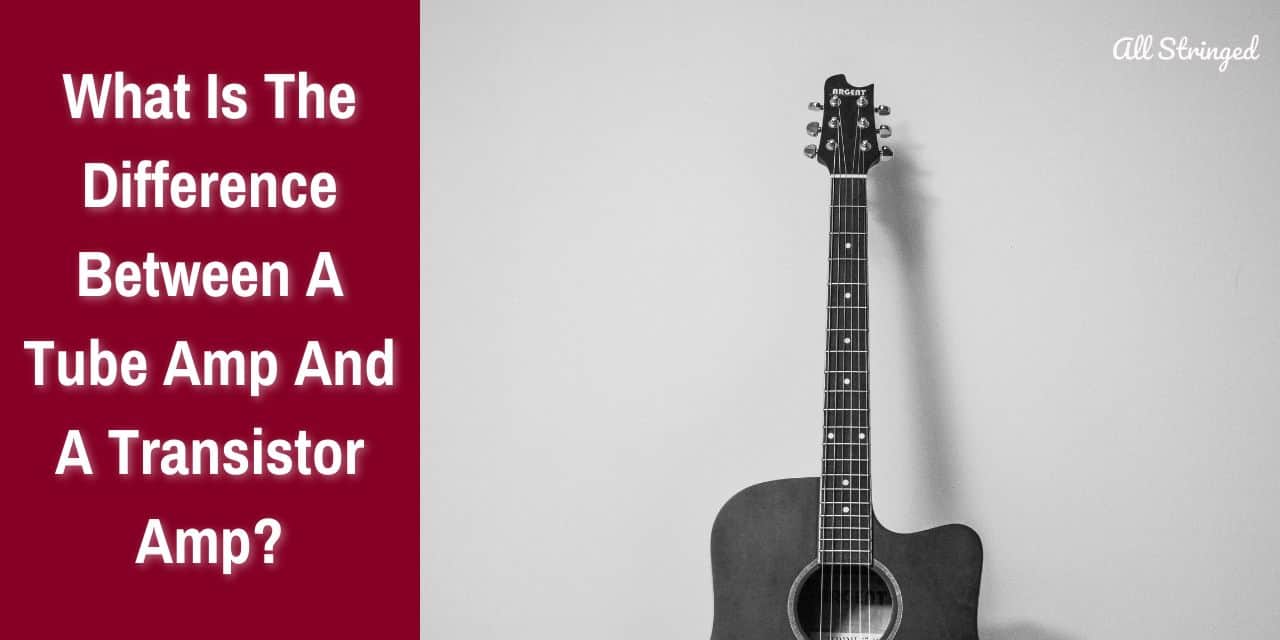Guitar players, it’s time to learn the difference between two of the most popular types of guitar amplifiers: tube amps and transistor amps. Both have their own unique sounds and pros and cons. If you’re looking to upgrade your guitar rig, you want to make sure you’re making the right choice! Get ready to learn the differences between tube amps and transistor amps and understand why one might be better suited for your needs than the other.
Definition of tube amps
Tube amps are electronic amplifiers that make use of vacuum tubes or valves for amplifying the electrical signals from musical instruments like guitars or keyboards. The vacuum tubes in a tube amp are responsible for amplifying the voltage and current of the signal, which results in a warmer and more organic tone compared to solid-state amps.
Tube amps were initially developed in the early 1900s, and they were widely used in radio communications and sound systems. In the 50s and 60s, tube amps became the standard for guitar amps, and many popular guitarists used them for creating their signature sound.
These amps are still used by many musicians until now, especially in the rock and blues genres. They are well known for their warm, natural sound and their ability to produce harmonic distortion, which adds richness and complexity to the sound. While tube amps are typically more expensive and need more maintenance than solid-state amps, many musicians prefer tube amps for their unique sound and tonal qualities.
>>> Click here to read our review about the Top 15 Best Tube Amps <<<
Tube amps are complex electronic devices that consist of a wide variety of components. Here is an overview of some of the key components commonly found in tube amps –
#1. Vacuum tubes
The vacuum tubes, or also known as valves, are the most significant component of the tube amp. These tubes amplify the electrical signal from the instrument and produce the warm, natural tone that tube amps are known for.
#2. Transformers
Tube amps contain several transformers that are responsible for converting the electrical signal from one voltage level to the other. The output transformer, in particular, is crucial for matching the impedance of the amplifier to the speaker.
#3. Capacitors
Capacitors are used for storing and releasing electrical energy in the tube amp’s circuit. They are essential for smoothing out the signal and removing any unwanted noise.
#4. Resistors
Resistors are used for limiting the flow of electric charge in the tube amp’s circuit. They are important for controlling the gain and bias of the tubes.
#5. Rectifiers
Rectifiers convert AC current to DC current, which is needed to power the vacuum tubes and other components in the tube amp.
#6. Circuit board
The circuit board is the physical platform that collects all the components in the tube amp. It contains all the complex networks of wires and connections that allow the amp to function.
How do tube amps work?
Tube amps are renowned for their warm, organic sound and their ability to produce natural-sounding distortion. A tube amp is often preferred by many musicians as they prefer the unique sound and tonal qualities that only tube amps can offer, particularly for blues, jazz, and classic rock music. As mentioned above, tube amps make use of vacuum tubes for amplifying the electrical signal from musical instruments. Here is how tube amps work –
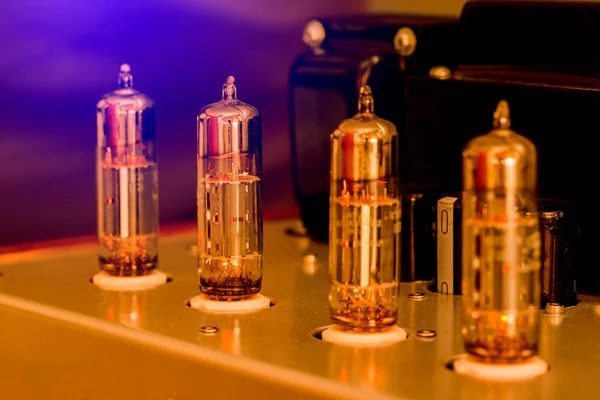
#1. Preamp stage
The electrical signal from the instrument first enters the preamp stage of the tube amp, where it’ll be amplified by a small signal tube. This stage is responsible for shaping the tone of the signal and providing initial amplification.
#2. Power amp stage
The signal will then enter the power amp stage, where it will be further amplified by a large power tube. This stage will provide the majority of the amplification and is responsible for producing the loud sound that is heard through the speakers.
#3. Output transformer
The amplified signal will then be sent to the output transformer, which matches the impedance of the amplifier to the impedance of the speakers.
#4. Speakers
Lastly, the amplified signal will be sent to the speakers, where it gets converted into sound waves that can be heard by the listener.
Tube amps work by using the properties of tubes for amplifying the electrical signal. Vacuum tubes are made up of glass and contain a vacuum inside. These tubes work by passing a current through a heated filament, which causes the electrons to get released into the vacuum. The electrons are then attracted to a positively charged plate, creating a flow of charge.
The amplification occurs when the electrical signal from the instrument gets applied to the grid of the tube. This causes a small change in the voltage of the grid, which, in turn, causes a larger change in the current flowing through the tube. This current will then be used for amplifying the signal in the power amp stage.
Overview of transistor amps
Transistor amps are electronic amplifiers that make use of transistors instead of vacuum tubes for amplifying the electrical signal from musical instruments. Transistor amps were initially introduced back in the 60s and they quickly gained popularity thanks to their durability, efficiency, and affordability.
Unlike tube amps, transistor amps utilize semiconductor materials like silicon and germanium for amplifying the signal. They are typically more compact and lightweight than tube amps and they don’t require the regular maintenance that tube amps do.
Transistor amps can be designed for producing a wide range of tones and sounds, from clean and pristine to gritty and distorted. They’re also capable of producing high levels of gain, which makes them quite popular with heavy metal and hard rock guitarists.
While transistor amps come with many advantages, they’re often criticized for their lack of warmth and depth compared to tube amps. The harmonic distortion produced by transistor amps can sound harsh and artificial compared to the natural-sounding distortion produced by vacuum tubes. Overall, they’re a popular choice for musicians who prioritize affordability, versatility, and durability over the warm, organic sound of tube amps/
However, many musicians still prefer the unique sound and tonal qualities of tube amps, particularly for blues, jazz, and classic rock music.
Here is an overview of some of the key components found in transistor amps –
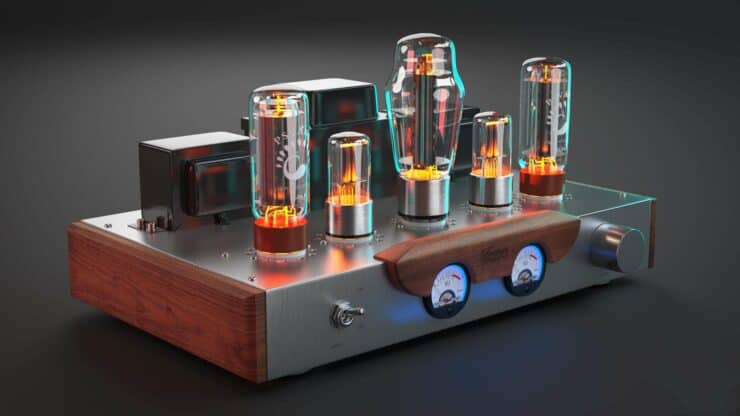
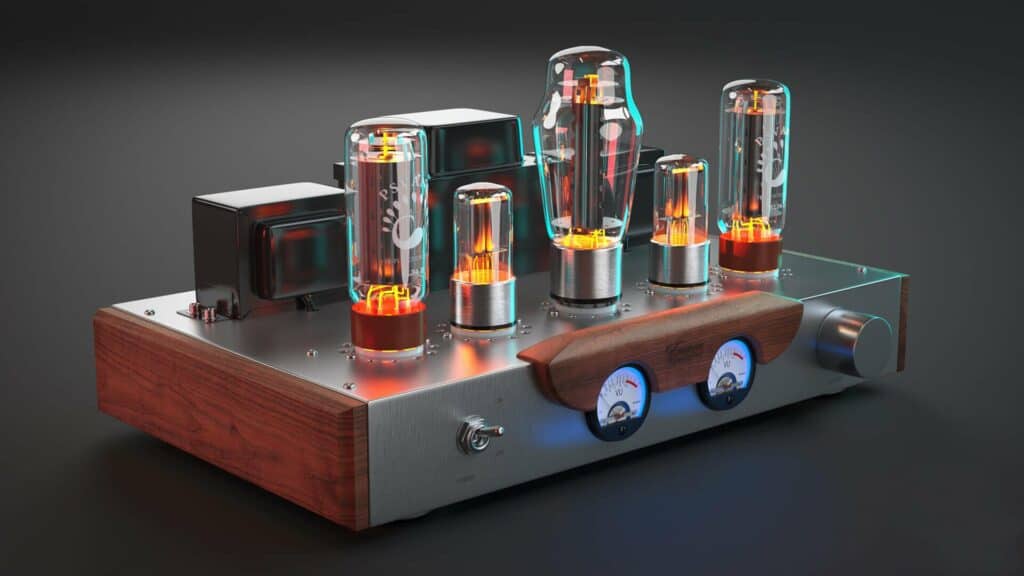
#1. Transistors
Transistors are the heart of the transistor amp. They amplify the electrical signal from the instrument and produce the sound that is heard through the speakers. The transistors in a transistor amp are typically made of semiconductor materials such as silicon and germanium.
#2. Capacitors
Capacitors are used for storing and releasing electrical energy in the transistor amp’s circuit. They are essential for smoothing out the signal and removing unwanted noise.
#3. Resistors
Resistors are used for limiting the flow of electric current in the transistor amp’s circuit. They are essential for controlling the gain and bias of the transistors.
#4. Diodes
Diodes are used for converting AC current to DC current, which is required for powering the transistors and other components in the transistor amp.
#5. Integrated circuits (ICs)
Integrated circuits are used for controlling various functions in the transistor amp, such as tone shaping and effects processing.
#6. Power supply
The power supply provides the needed voltage and current for powering the transistors and other components in the transistor amp.
#7. Speaker
The speaker converts the electrical signal from the transistor amp into sound waves that can be heard by the listener.
While each component plays a key role in the operation of the transistor amp, it is the combination of all the parts working together to create the unique sound and tonal qualities of a transistor amp. Transistor amps can be designed for producing a wide range of tones and sounds, from clean and pristine to gritty and distorted, and they are popular with a wide range of musicians for their affordability, durability, and versatility.
How do transistor amps work?
Transistor amps are known best for their reliability, low cost, and low maintenance requirements. They’re capable of producing high levels of distortion and can be used for a wide range of music styles. But how do they work?
Transistor amps, or also known as solid-state amps, make use of semiconductor devices called transistors for amplifying the electrical signal from musical instruments. Here is how transistor amps work –
#1. Preamp stage
The electrical signal from the instrument will first enter the preamp stage of the transistor amp, where it gets amplified by a transistor. This stage will be responsible for shaping the tone of the signal and providing initial amplification.
#2. Power amp stage
The signal will then enter the power amp stage, where it’ll further get amplified by a series of transistors. This stage provides the majority of the amplification and is responsible for producing the loud sound that is heard through the speakers.
#3. Output transformer
Some transistor amps utilize an output transformer for matching the impedance of the amplifier to the impedance of the speakers. However, many transistor amps don’t necessarily require an output transformer, as the transistors are capable of driving low-impedance loads directly.
#4. Speakers
Lastly, the amplified signal is sent to the speakers, where it’ll get converted into sound waves that can be heard by the listener.
Transistor amps work by using the properties of semiconductor devices for amplifying the electrical signal. Transistors are made up of materials such as germanium or silicon and can be designed to operate as switches or amplifiers.
The amplification occurs when the electrical signal from the instrument is applied to the base of the transistor. This causes a small change in the voltage of the base, which will, in turn, cause a larger change in the current flowing through the collector-emitter circuit. This current will then be used for amplifying the signal in the power amp stage.
What is the difference between a tube amp and a transistor amp?
When it comes to choosing an amp for your guitar, there are many factors that you need to consider. Two of the most common types of guitar amps are tube amps and transistor amps. While both of these amps serve the same purpose, they do have some significant differences in their tone, volume, power, and maintenance. Here is an overview of some of the differences between tube amps and transistor amps –
Tone
One of the most significant differences between tube amps and transistor amps is their tone. Tube amps are known for their warm, organic sound, while transistor amps are often described as more clinical or sterile. This is the case because the vacuum tubes in a tube amp can create a natural distortion when pushed to higher volumes, which can add character and warmth to the sound. Meanwhile, transistor amps are designed to be more clean and clear, with a flatter frequency response.
Volume
Tube amps are typically louder than transistor amps, especially at lower volumes. This is because they come with a more natural compression and saturation that allows them to cut through the mix without having to crank the volume. On the other hand, transistor amps tend to sound best at higher volumes, where they can really open up and show their full range of tones.
Power
Tube amps need more power for operation than transistor amps, which can make them more expensive to run. They also tend to have a lower power output, which means that they might not be suitable for larger venues or outdoor performances. Transistor amps, on the other hand, are often more efficient and can produce a higher output with less power.
Maintenance
Tube amps require more maintenance than transistor amps. The tubes have to be replaced periodically, and the amp itself might have to be serviced to keep it running at its best. This can be time-consuming and expensive, especially if you don’t have a lot of experience working on electronics. Meanwhile, transistor amps require very little maintenance and are generally more reliable.
Pros and cons of tube amps
Tube amps have long been a mainstay in the world of music for decades and for good reason. These guitar amps are known for their warm, organic tone and dynamic response, which makes them a popular choice among musicians of all genres. However, like any electronic equipment, even tube amps come with certain pros and cons.
The pros of using tube amps are –
#1. A warm, organic tone
One of the primary advantages of tube amps is their warm, rich tone. The tubes used in these amps add a pleasing harmonic distortion that can make the sound fuller and more expensive. This type of distortion is often referred to as “tube saturation” and it is a key reason why many guitarists and other musicians prefer tube amps over other types of amplifiers.
#2. Dynamic response
Another major pro of tube amps is their dynamic response. Tube amps are known for their ability to respond to a player’s touch and playing dynamics, which can result in a more expressive and musical performance. This is because the valve tubes in the amp respond differently to different playing styles, producing a wide range of tones depending on how hard or soft a player strikes the strings.
#3. Visual appeal
Tube amps are often prized not just for their sound but also for their aesthetic appeal. The glowing tubes and vintage design of the tube amps can add a sense of nostalgia and vintage charm to a performance or recording session.
The cons of using tube amps are –
#1. Relatively expensive
While the warm tone of tube amps is a major advantage, it does come at a cost. Tube amps can be more expensive than other types of amplifiers due to the cost of the tubes and other components. A tube amp might require more maintenance and repairs over time, adding to the overall cost.
#2. Fragile
Tubes are rather delicate components that can be damaged easily if the amp is dropped or mishandled. They also generate heat, which can greatly damage other components in the amp if not managed properly. This fragility makes tube amps less durable than other types of amplifiers, which can be a disadvantage for musicians who need gear that can withstand heavy use and travel.
#3. Relatively heavy
Another major drawback to tube amps is that they’re typically heavier and bulkier than other types of amps. This is because of the large transformers and other components needed to power the tubes. This can be a disadvantage for musicians who need to transport their gear frequently or play in small venues with limited space.
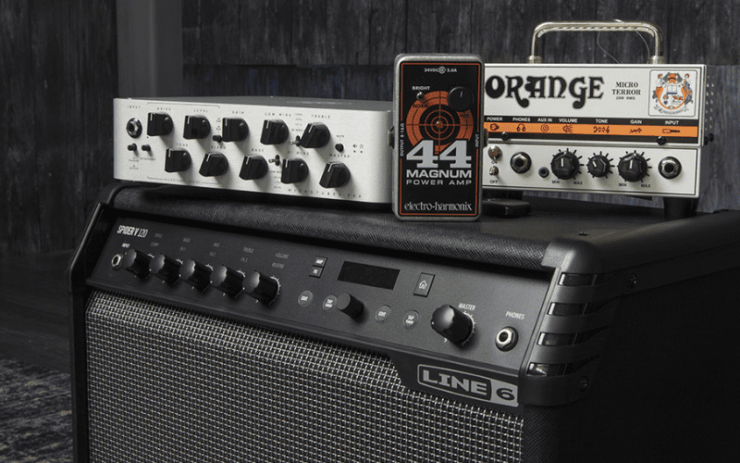
Pros and cons of transistor amps
Transistor amps have been becoming more and more popular lately. These amps use transistors instead of tubes for amplifying the signal and offer various advantages over tube amps. However, like any piece of equipment, there are certain pros and cons of using a transistor amp.
The pros of a transistor amp are –
#1. Extremely affordable
One of the major pros of transistor amps is their affordability. They are typically less expensive than tube amps, making them a more accessible option for musicians on a budget.
#2. Lightweight
Transistor amps are much lighter compared to tube amps, which can be a huge advantage for musicians who have to transport their gear frequently or play in small venues with limited space. This makes them an excellent option for guitarists who need a portable, lightweight amp for rehearsals or gigs.
#3. Low maintenance
Unlike tube amps, which need regular maintenance and occasional tube replacements, transistor amps need little maintenance. They are generally more reliable and less prone to breakdowns than tube amps, which can save musicians time and money eventually.
The cons of a transistor amp are –
#1. Less warm tone
While transistor amps offer various advantages, they are often criticized for their lack of warmth and organic tone. Transistor amps tend to produce a more sterile, flat sound that lacks the character and depth of tube amps. This can be a particular disadvantage for musicians who prioritize tone and expressiveness in their playing.
#2. Limited dynamic range
Another disadvantage of transistor amps is their rather limited dynamic range. They are less responsive to a player’s touch and playing dynamics and produce a more uniform sound regardless of how hard or soft a player strikes the strings. This can make it quite difficult for musicians to achieve the same level of expressiveness and musicality that they can with a tube amp.
#3. Susceptible to clipping
Transistor amps are also susceptible to clipping, which occurs when the signal exceeds the amp’s maximum capacity. This can result in a distorted and unpleasant sound that can damage speakers and other components in the amp. This can be a disadvantage for musicians who need high-volume levels or need to play with a lot of distortion.
FAQs
What is the main difference between a tube amp and a transistor amp?
The main difference between a tube amp and a transistor amp is the type of technology used. Tube amps use vacuum tubes for amplification, while transistor amps use transistors. Tube amps are known for their warmer and more dynamic sound, while transistor amps are known for their clean and consistent sound.
What are the advantages and disadvantages of tube amps?
The main advantages of tube amps are their warmer and more dynamic sound, greater headroom, and natural compression. The main disadvantage of tube amps is their cost and complexity, as they require more maintenance and may need to be replaced more often.
What are the advantages and disadvantages of transistor amps?
The main advantages of transistor amps are their affordability, consistent sound, and low maintenance requirements. The main disadvantage of transistor amps is their lack of warmth and dynamics compared to tube amps.

